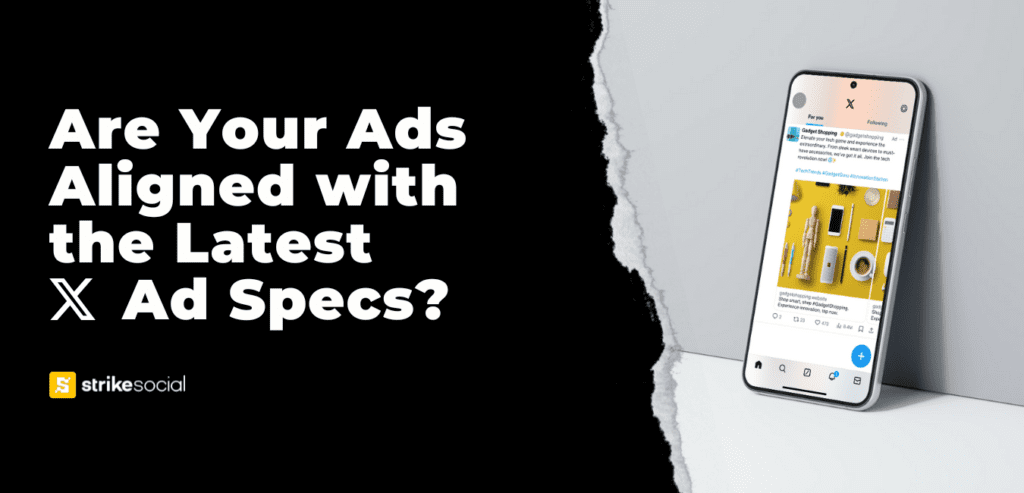With over 541 million monthly active users, Twitter is a lucrative platform for advertisers big and small. It offers numerous ad formats and you can certainly find one that fits your business needs.
To make it easy to get started, we’ve laid out the Twitter ad specs for each of the different Twitter Cards below.
Choose a Twitter Card type
- Summary Card
- Summary Card with large photo
- Website Card
- App Card
- Video App Card
- Player Card
- Conversational Ad Card
- Direct Message Card
Related: Everything you need to know about Twitter Cards
Summary Card
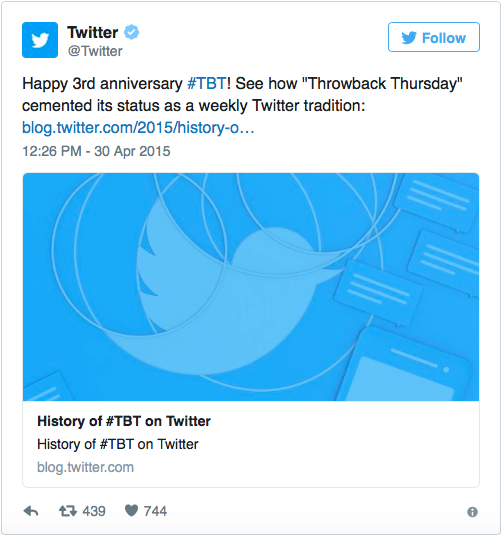
The Summary Card has many different purposes. It can be used to promote blog posts, news articles, products and even restaurants. It gives viewers a sneak peak into your content before clicking to your website. It can be used with an icon, a single image, multiple images or a GIF.
- Title: 70 characters
- Tweet copy: 280 characters
- Description: 200 characters
- Image size: at least 120 pixels by 120 pixels; 1MB maximum
- Formats accepted: PNG, JPEG, GIF
- Aspect ratio: 2:1
Related: The best social media ad units to drive sales
Summary Card with Large Photo
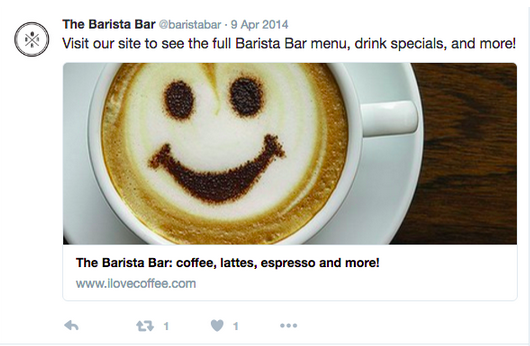
Summary Cards with a Large Image are designed to give the reader a rich photo experience. This Twitter Card features a large, full-width image alongside a tweet. Clicking on the image takes the user to your website.
- Title: 70 characters
- Tweet copy: 280 characters
- Description: 200 characters
- Image size: 280 pixels by 150 pixels (minimum); 1MB maximum
- Formats accepted: PNG, JPEG, GIF
- Aspect ratio: 2:1
Related: How much does social media advertising cost?
Website Card
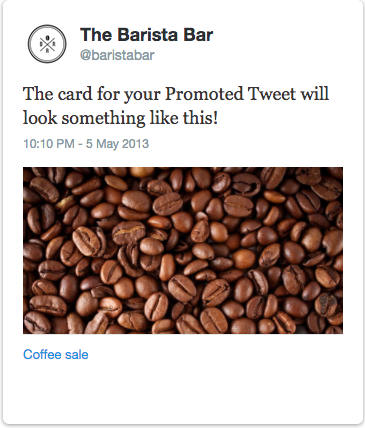
Website Cards are best used for website conversion campaigns. They are designed to drive users to a specific, off-site URL.
- Tweet copy: 280 characters
- Website Title Length: 70 characters
- Media: image
- Size: 800 pixels by 418 pixels for 1:91:1 aspect ratio and 800 pixels by 800 pixels for 1:1 (3MB maximum)
- Formats accepted: JPEG, PNG
- Aspect ratio: 1.91:1, 1:1 (1:1 not available for self-serve advertisers)
Related: How to use social media for brand loyalty
App Card
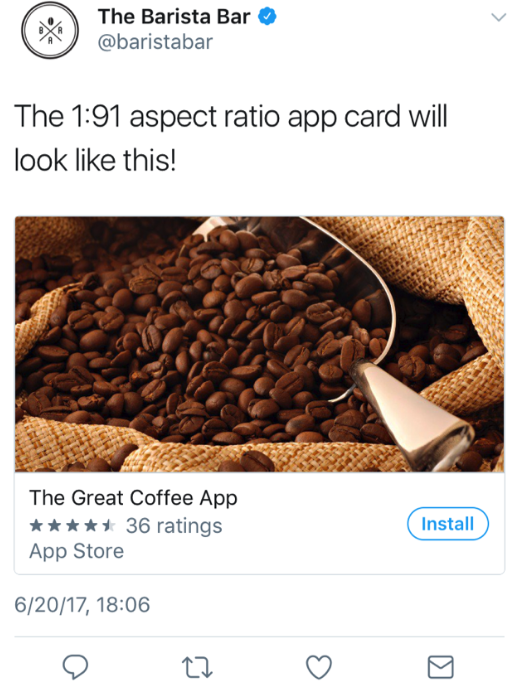
The App Card is ideal for promoting mobile apps on Twitter. They display your app’s name, description and logo.
- Tweet copy: 280 characters
- Size: 800 pixels by 418 pixels for 1:91:1 aspect ratio and 800 pixels by 800 pixels for 1:1 (3MB maximum)
- Title/price: pulled from link to the app store
- Formats accepted: JPG, JPEG, PNG, GIF
- CTA options: install (default if app is not installed), open (default if app is installed), play, shop, book, connect and order
Related: How AI can improve your paid social by 25%
Video App Card
Video App Cards allow users to preview your app, which allows more educated and qualified downloads. The video plays automatically in timelines, giving you the chance to engage with your audience throughout their day.
- Title (under video): 70 characters
- Tweet copy: 280 characters
- Formats accepted: MP4 or .MOV
- File size: under 1GB for optimal performance
- Video: 2 minutes and 20 seconds maximum (select advertisers up to 10 minutes)
Related: How to manage global advertising campaigns
Player Card
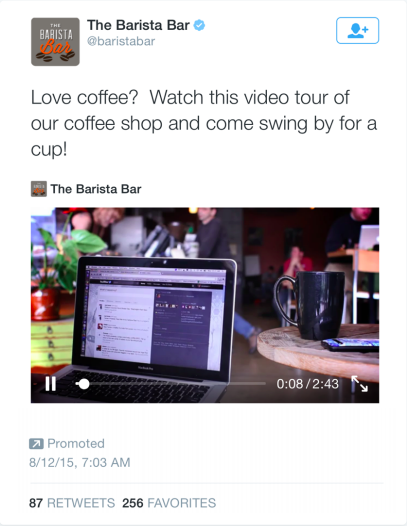
Native to the Twitter platform, the Player Card offer users a one-click experience for a Promoted Video. It displays high-quality video content and is designed to be shown on a cost-per-view basis, meaning you pay only when someone clicks your video ad.
Think of the Player Card as you would a commercial. They essentially serve the same function on Twitter streams. You might use a video ad over an image ad if you have a product or service that might benefit from a demonstration — or if you are simply adapting a commercial for online consumption.
- Tweet copy: 280 characters
- Title (under video): 70 characters
- Description (under video): 200 characters
- Media: video
- Formats accepted: MP4 or .MOV
- File size: under 1GB for optimal performance
- Video: 2 minutes and 20 seconds maximum
- Aspect ratio: 16:9
Related: How to choose the social media advertising agency that’s right for you
Conversational Ad Card

Conversational Cards allow the user to interact with your tweet. They can respond to your tweet by hitting one of the call-to-action buttons which have a hashtag on them. By choosing one option, the user unlocks hidden content that then shares your message with their followers.
- Tweet copy: 280 characters
- Hashtag: 21 characters
- Pre-populated user tweet: 256 characters
- Headline: 23 characters
- Thank you text: 23 characters
- Thank you URL (optional): 23 characters
- Video (if used): same specifications mentioned in “Video App Card” or “Player Card” sections
- Image (if used): 800 pixels by 320 pixels
- File size: 3MB
- File formats: JPEG, PNG, non-animated GIFs
Related: Five ways machine learning can improve advertising
Direct Message Card
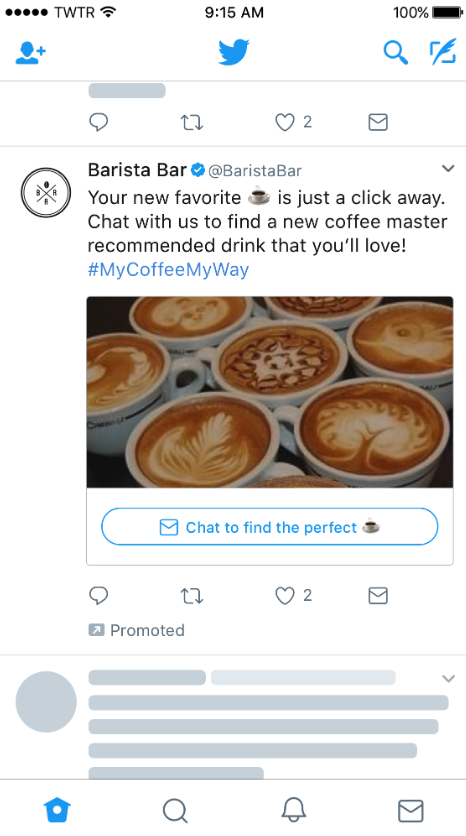
An engaging video or image prompts the user to click an automated reply — one of four fully-customizable call to action buttons — which allows a bot to directly interact with the user through their direct message inbox.
- Tweet copy: 256 characters (24 characters used for the card)
- Size: Minimum width 800 pixels
- Video specs (if used): same as Player Card, 16:9 aspect ratio required
- File size: 3 MB, apsect ratio 5:2 or 1:91:1
- Call to action text: 24 characters (emojis supported)
Related: How to create a mobile-first ad strategy
Tweeting with a purpose
Now that you’ve gained the knowledge of the best sizes and file types to build Twitter Cards with, it’s time to tweet your message to the world. Remember to keep in mind the Twitter ad specs that work best for your brand.
Social media ad dimensions |
| Facebook | Twitter | LinkedIn | Pinterest | Snapchat | YouTube | Instagram |
Twitter is now X! See the updated ad specs here:
